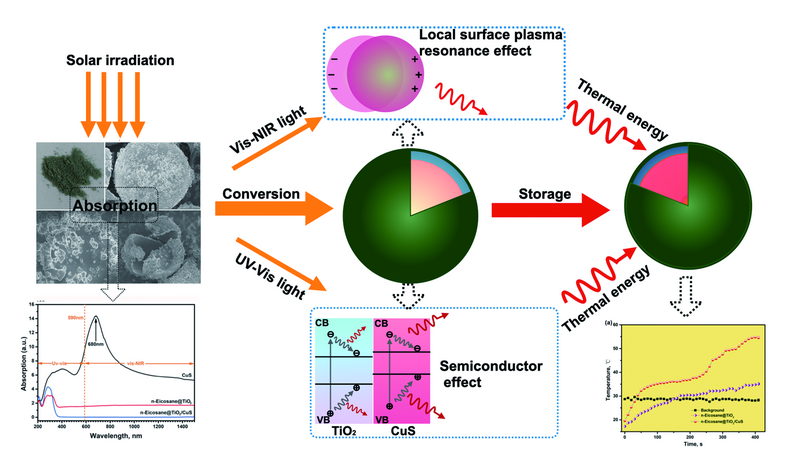Article contents
Fabrication and characteristics of solar-driven phase change microcapsules with crystalline TiO2/CuS hybrid shell for solar energy conversion and storage
Published online by Cambridge University Press: 15 July 2020
Abstract

To advance the utilization of solar thermal energy, a novel solar-driven microcapsule was designed by the combination of high-performance CuS nanoconverter and the microencapsulated n-Eicosane with a brookite TiO2 shell via in situ sol–gel method. The resultant n-Eicosane@TiO2/CuS microcapsules possessed excellent thermal properties with high latent heat density (171.7 J/g), high encapsulation efficiency (71.7%), and increased thermal conductivity (0.730 W/(m K)). SEM analysis clearly verified that CuS nanoparticles exhibited a uniform distribution on the surfaces. Most of all, the addition of CuS not only enlarged the absorption spectra from the UV to the visible and NIR region but also achieved high solar-to-thermal conversion efficiency (94.41%). Due to the high heat storage capability and solar irradiation utilization efficiency, this solar-driven microcapsule possesses great potential for the solar energy utilization.
Keywords
- Type
- Article
- Information
- Copyright
- Copyright © Materials Research Society 2020
References
- 9
- Cited by





